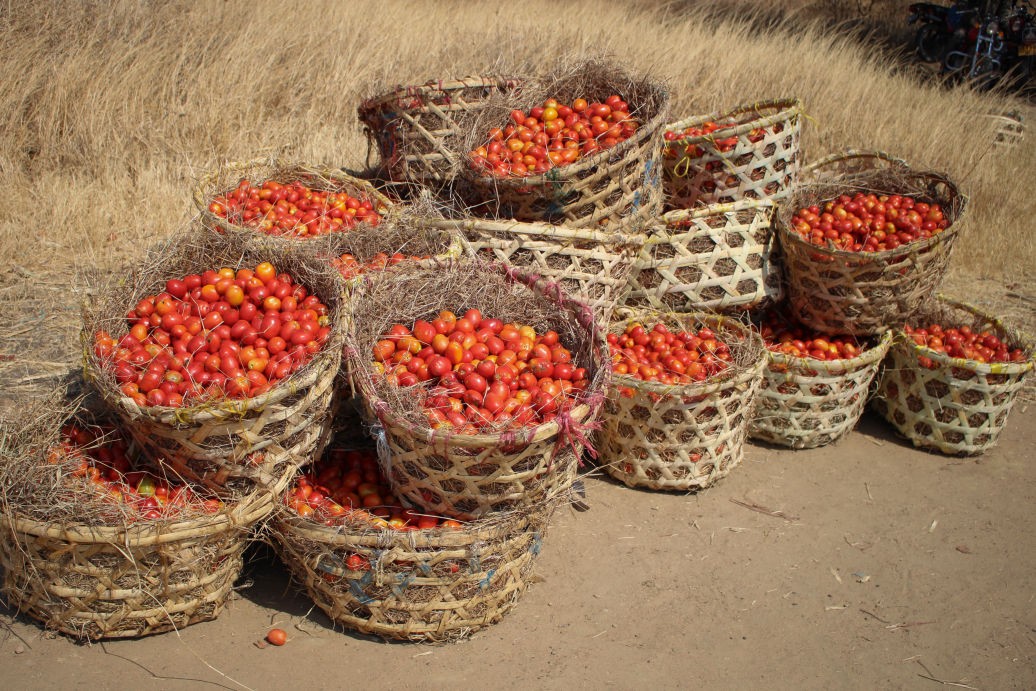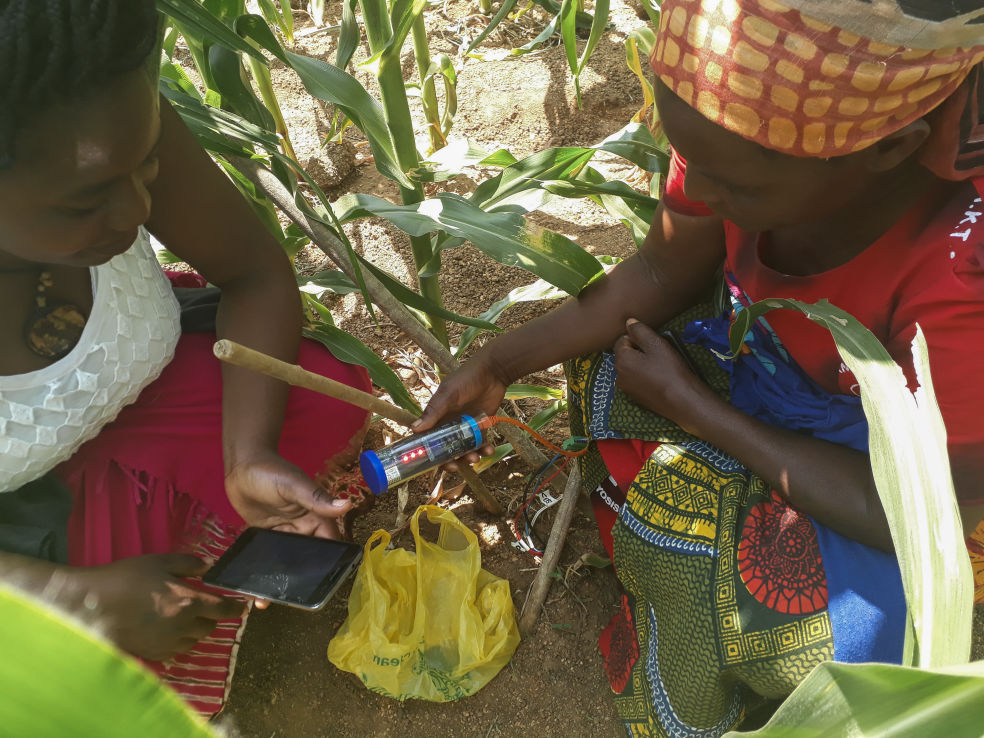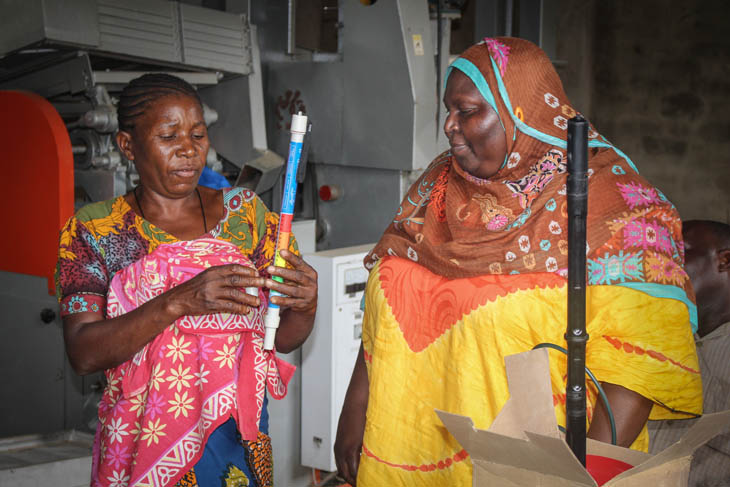Chameleon calling
Taking shelter under the solar panels on a rainy day in southern Malawi, the women sing:
"VIA lift us up – Others have failed us."
This is not the line we expected to hear. When we started developing the VIA monitoring tools, we assumed they would be used for routine irrigation decisions. Now we see that the story runs much deeper.
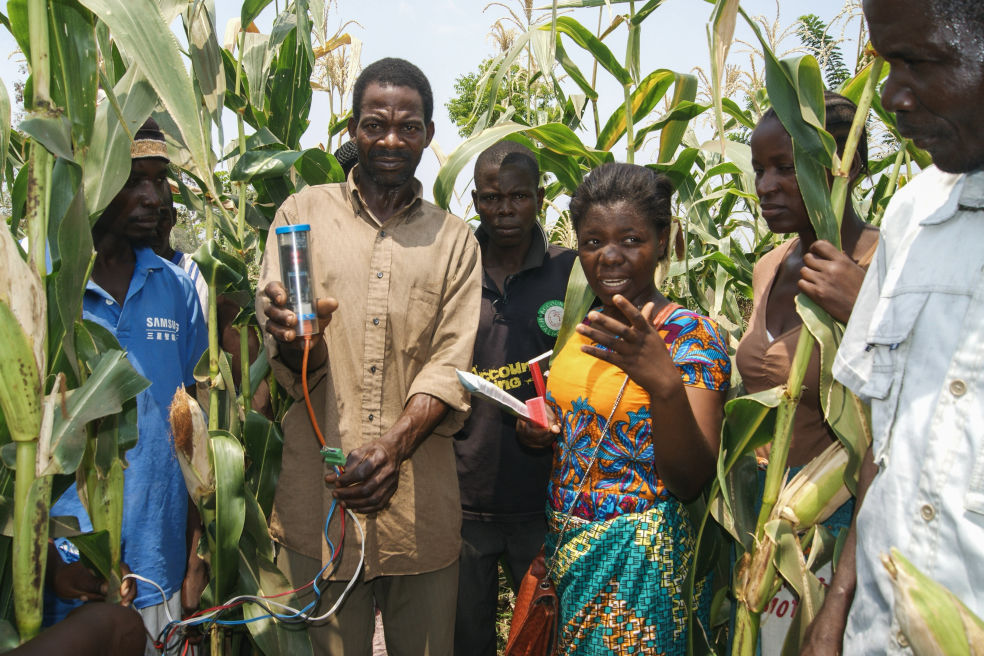
These outcomes are documented in scientific papers, VIA Research Publications. The results are remarkable. It is not unusual for yields to increase by 30-50%, while using substantially less water. But what is even more amazing is hearing directly from the farmers themselves.
Abdalah Tave grows vegetables in the Iringa region of Tanzania. He explains:
"When the Kinyonga (Swahili for Chameleon) is always blue then the Bendera (Swahili for the Wetting Front Detector) will go white."
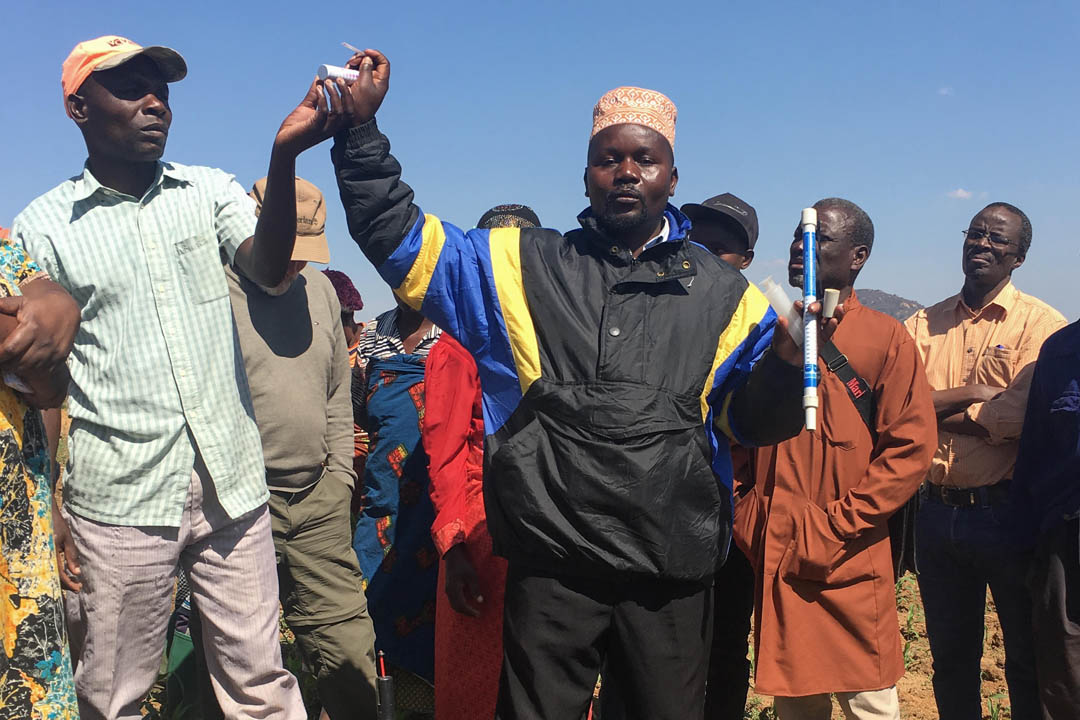
Abdalah is speaking about a nitrate test strip, which rapidly changes colour from purple to white as nitrate is leached out of the root zone. The constant blue colour of the Chameleon sensors told him he was applying too much water. Others observed that the youngest emerging leaves were greener if you skipped irrigations. The concept of over irrigation and washing away nutrients spread quickly among farmers across the scheme.
